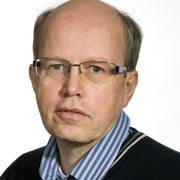The goal is to generically find operation strategies for all storages in the Nordic system that on average give the best utilization of the system, and to simulate the consequences on e.g. prices and reservoir operation for possible future inflows.
Moreover, the huge increase in non-controllable renewable production and the stronger coupling to continental Europe challenges existing computation methods, and shall be taken into account.
Perfect utilization of the hydro storages may be formulated as a mathematical optimization problem. The problem size and complexity makes it for all practical purposes impossible to solve without making several important simplifications. One of the most important simplifications is aggregation of physical hydro storages and plants into an aggregated equivalent representation. The aggregated hydro model gives more flexibility than the physical system and disaggregation techniques are used to verify that reservoir operation strategies for the aggregated model is possible for the physical system.
Existing methods has been unchanged for decades and the project re-visit and upgrade these to produce a new planning model adapted to analysis of the future electricity market.
The project gal is knowledge building and to make improved mathematical methods and computer tools for aggregation and disaggregation of hydro in optimization models. Both the aggregated model structure and methods for aggregation and disaggregation will be addressed.
The project work started summer 2015 and has been concentrated on the following three activities:
- A literature review related to application of aggregation and disaggregation techniques in other parts of the world.
- Knowledge building on existing disaggregation technique.
- The activity has been combined with a new solution approach where parts of the existing disaggregation technique are combined with formal optimization to give a new solution approach.
- First results from this new model are promising but much more testing are needed.
- Implementation and testing of a new method for calculation of energy inflow to aggregated energy model.
- The new method is tested on a user case from summer 2014 where the existing model gave illogical results.
- The new method will be further tested to verify that it gives general improvements and not only solve a specific problem.
Activities related to aggregate model structure will start beginning of next year.

